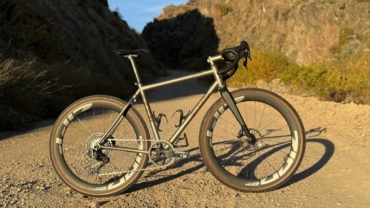In November 2021, the nonprofit Call2Recycle started working with e-bike makers to create a voluntary program for recycling the bikes’ heavy-duty batteries.
But there was more at stake than just “conscious capitalism” — recycling old e-bike batteries is also a measure of public safety. Look at New York City, where officials have connected e-bikes to about 60 fires and six deaths this year alone, NPR reported in April.
Through a partnership between Call2Recycle and People For Bikes, “Hungry for Batteries” will encourage e-bike owners to properly dispose of their lithium ion batteries and give them resources to help do it.
The two groups have developed the campaign to help riders know when, where, and how to recycle these potentially dangerous power sources.
Debuting Wednesday, May 10, the campaign will publish social media posts with new animated characters Watts and Rey. So if you see a couple of Monsters Inc.-style hooligans gobbling up e-bike batteries on your socials: Now you know why.
Call2Recycle: Background
Electric bicycles have soared in popularity in recent years, outpacing sales of both regular bikes and electric cars. Yet aging and neglected e-bike batteries have caused an increasing number of explosions. In August 2022, one such exploding battery killed two people in New York City, including a 5-year-old girl.
To address that issue while also reusing the base materials, 53 e-bike brands have now joined forces with Call2Recycle. Together, they’ve recycled more than 23,000 pounds of batteries since last year.
“With all of the fires that have been happening, we don’t want this industry to take a step back,” said Linda Gabor, the nonprofit’s executive vice president of external solutions. “We want to make sure that these don’t end up causing fires somewhere.”
For Call2Recycle, the program is just getting started.

First in Transportation Industry to Unify Battery Recycling
Once regarded as tech of the future, electrified transportation has become commonplace in recent years, from cars and boats to scooters and hoverboards.
Certain individual manufacturers (like General Motors) have started recycling initiatives for the batteries powering their new-fangled machines. However, Call2Recycle said that its new program represents the first time an entire segment of the transportation industry has unified to ensure battery recycling.
Call2Recycle has been focused on recycling household batteries (like the ones for your TV remote) since its founding in 1994. Then, in 2019, another nonprofit called PeopleForBikes approached the organization about recycling e-bike batteries. The two groups worked together to establish 1,670 sites across the United States for e-bike owners to drop off aging power supplies.
U.S. regulations don’t require e-bike manufacturers to recycle the batteries, making any such effort by bike makers voluntary.
“This really was the first time for an industry in the mobility sector to pull together a voluntary program,” Gabor said.
Trek Bicycle Corporation became one of the first brands to help found and join the recycling program.
“At the center of everything we do in bike share is sustainability,” Tyler Britz, bike share marketing manager at Trek Bikes, said in a news release. “Before and after our bikes are on the ground and being used, we want to make sure that we’re creating sustainable habits throughout the entire life cycle of our products and our bikes.”
How Call2Recycle Works
There may be a simple explanation why widespread battery recycling hasn’t happened sooner: It’s not a simple process.
It starts with e-bike owners understanding the need for recycling and bringing their dead batteries to an approved drop-off location. These locations are usually dealers or retailers who use recycling kits from Call2Recycle to make the batteries safe for shipping.
Then the batteries get sent to a “sorter,” which weighs and analyzes the shipments. And then they’re moved again to a processor, which uses various methods to recover the cobalt, nickel, manganese, and lithium. Those materials are then sold back to manufacturers for reuse.

It’s crucial to reuse those materials to avoid increased lithium mining, which is often devastating for both natural ecosystems and the indigenous communities who live in them.
“As the world becomes more electrified, we want to make sure we can recycle safely and responsibly,” Gabor said.
After seeing success in the program’s first year, Call2Recycle is planning a 2023 campaign to raise awareness among cyclists.
“We got the manufacturing support,” Gabor said. “Now we want to make sure that if we build it, they will come.”
Learn more about the program on Call2Recycle’s website.








